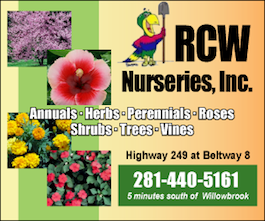May’s heavy rains brought yard flooding in some areas. It not only caused damage to homes, but plants, gardens and lawns as well. Even though the short-term effects of flooding and waterlogging subside, longer-term issues demand your careful attention.
Yard flooding leads to long-term problems
The longer your soil is saturated, the more severe problems can become. The immediate extent of damage from garden and yard flooding is dependent on the time of year, duration of flood waters, plant sensitivity to flooding, and your soil type.
Yard flooding drowns lawns and plants
As water replaces the air in the soil, roots are denied the air they need to breathe. They literally drown then start to rot and die. Look for the first signs of trouble on the leaves of affected plants. Watch for leaves turning yellow, wilting and dropping prematurely. These symptoms are similar to drought, because the dead roots can’t soak up water.
Other symptoms to watch for:
- Shoots may start to die back and the whole plant may start to wilt
- Bark may start to peel off stems
- Herbaceous plants may fail to come into growth in spring, or their leaves may open initially but then wilt and die
- Bulbs start to rot and die
- Plants may look stunted with poor, thin growth and, in the worst circumstances, completely die
There is some good news
There are things you can do to rescue your plants and gardens. Once the water has run off, plants will start to revive. Helping plants build up the strength is the best way of rescuing them from these serious problems.
Short-term plant rescue
Don’t walk on waterlogged soil until it dries out and is workable. This helps avoid compacting making growing conditions worse. If you have to walk on it, use a plank of wood, board. This spreads your weight helping avoid compaction.
Rescuing grass after yard flooding
If your lawn was submerged for a longer period of time or a layer of silt is present, there may be more extensive injury.
If your grass is actively growing following flooding, broadcast a complete fertilizer over the lawn at a rate of 1/2 pound nitrogen per 1000 square feet of lawn. Mow your grass frequently enough that no more than one-third of the grass blade height is removed with a single mowing session.
Use a vertical mower or dethatching rake to break up thatch, the brown layer of living and dead stems, leaves and other debris atop the soil surface, if it grows more than 1/2 inch thick or into a stubborn crust.
Believe it or not, watering is important
This may sound bizarre, but you may have to water plants thoroughly during dry spells following yard flooding or waterlogging. That’s because they are more susceptible to drought stress due to reduced or damaged root systems.
Learn more about protecting your plants and yards with tips from our trusted company for gardening, RCW Nurseries
































